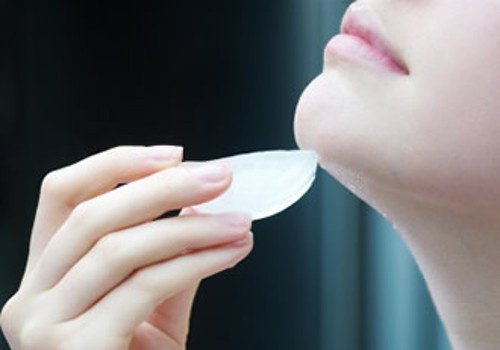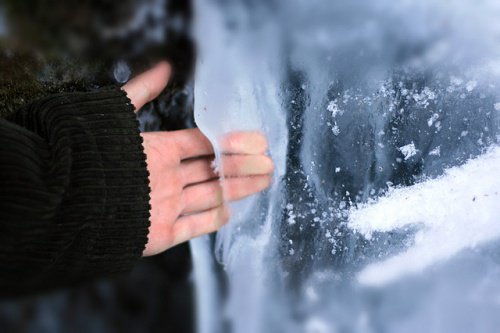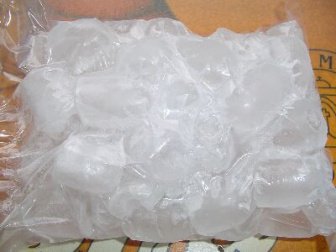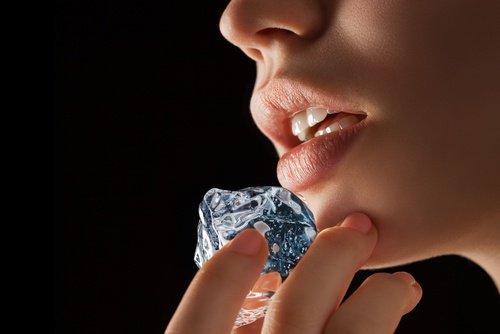Ice Therapy for Toning and Weight Loss

Have you heard about a technique called ice therapy that uses cold to help you lose weight? Want to learn more? Check out this article!
Ice therapy for weight loss?
Yes, you read it correctly. There might be a certain taboo when it comes to using ice as a treatment, but it can be really beneficial. For example, if you have a sore throat, eating crushed iced will help your throat feel much better than drinking hot tea. That’s because the cold will soothe the irritation while refreshing your throat at the same time. But we’ll discuss that another time.
Now we’re going to focus on the relationship between ice therapy and weight loss. If you’ve tried other techniques using heat and couldn’t manage to lose a single ounce, then you might be interested in trying ice therapy.
Many studies show that applying ice to certain parts of the body helps to burn fat. Experts say that it’s very effective in reducing size and strengthening skin tissue. If you don’t believe it, just think about how your body feels after taking a cool bath or swimming in an unheated pool.

What is ice therapy?
Maybe you don’t understand how ice can help you lose weight. Ice therapy is the application of ice to areas of the body that are sagging or overweight in order to firm and slim them. What are the benefits of this treatment?
- Detoxifies the body.
- Tightens and firms tissue.
- Naturally lifts sagging skin.
- Improves cellulitis.
- Promotes blood flow (must be accompanied with an exfoliating therapy).
- Reduces size in just a few sessions.
Ice therapy started in Mexico in the early 2000s and is an innovative massage technique. That is to say that when it is combined with a healthy diet and exercise, it can have significant benefits for the body. Results are seen with the first application because, together with medicinal plants, it increases the absorption of fats and stimulates the production of new cells.
There are a few different ways to apply ice to the skin and enjoy its benefits. You can use a bag or a gel pack designed for particular areas of the body like the eyes and abdomen. You just freeze them, and then apply them to the corresponding area. If you’d like to try ice therapy at home, first put a few ice cubes in a bag, then wrap them in a thin cloth, and, finally, apply it to the areas where you want to lose weight or tighten the skin.

How does ice therapy work?
In large cities in the US and Europe, there are specialized centers where you can enjoy ice therapy. First, a special mud is used to purify and exfoliate the skin, activating blood flow and preparing the area for the next step. Finally, an ice massage completes the session. No known side effects have been reported.
Ice therapy is recommended for anyone who wants to firm the skin and lose weight. It’s not just for women either, although 95% of ice therapy users are women. Surprisingly, experts especially recommend it for women after childbirth and nursing. This is due to it being less invasive than other techniques. In addition to that it has no side effects, and can be used right after giving birth.
In addition, ice therapy can be used by women over the age of 40 that are beginning to notice a loss of firmness in their bust, buttocks, and abdomen, etc. Ice will firm the skin and invigorate in each of these cases.
There are many different types of ice on the market that increase the effectiveness of the therapy if you want to enjoy it at home. For example, some include different types of oils and natural herbs that offer effects in addition to slimming and firming.

You can make:
- Anti-stretch ice
- Ice for a flat stomach
- Ice to reduce size
- Facial ice
- Ice to fight sagging
- Ice for after childbirth
How to perform ice therapy at home
Maybe you don’t have the time or the money to go to an ice therapy institute in a big city. Don’t worry! You can enjoy an effective ice therapy session right in the comfort of your own home.
You’ll need:
- 3 tablespoons horsetail herb
- A handful of rosemary leaves
- 3 tablespoons instant coffee
- A handful of ivy
- 2 lbs green tea or yerba mate
- ½ liter of water
Directions
First of all, boil the ingredients for 15 minutes. Then remove from heat and let it cool to room temperature. After that, pour into a plastic container (even better if you have an ice cube tray) and place into the freezer until frozen.
Once frozen, use the resulting ice to massage the areas that you want to reduce or firm, always in circular motions. Please note if you have really sensitive skin, wrap the ice in a cloth or plastic bag to avoid burning yourself.
All cited sources were thoroughly reviewed by our team to ensure their quality, reliability, currency, and validity. The bibliography of this article was considered reliable and of academic or scientific accuracy.
- Ingargiola, M. J., Motakef, S., Chung, M. T., Vasconez, H. C., & Sasaki, G. H. (2015). Cryolipolysis for fat reduction and body contouring: safety and efficacy of current treatment paradigms. Plastic and reconstructive surgery, 135(6), 1581. https://www.ncbi.nlm.nih.gov/pmc/articles/PMC4444424/
- Krueger, N., Mai, S. V., Luebberding, S., & Sadick, N. S. (2014). Cryolipolysis for noninvasive body contouring: clinical efficacy and patient satisfaction. Clinical, cosmetic and investigational dermatology, 7, 201. https://www.ncbi.nlm.nih.gov/pmc/articles/PMC4079633/
- Kilmer, S. L., Burns, A. J., & Zelickson, B. D. (2016). Safety and efficacy of cryolipolysis for non‐invasive reduction of submental fat. Lasers in surgery and medicine, 48(1), 3-13. https://onlinelibrary.wiley.com/doi/full/10.1002/lsm.22440
- Ravussin, Y., Xiao, C., Gavrilova, O., & Reitman, M. L. (2014). Effect of intermittent cold exposure on brown fat activation, obesity, and energy homeostasis in mice. PloS one, 9(1), e85876. https://www.ncbi.nlm.nih.gov/pmc/articles/PMC3895006/
- Izquierdo Hernández, A., Armenteros Borrell, M., Lancés Cotilla, L., & Martín González, I. (2004). Alimentación saludable. Revista cubana de enfermería, 20(1), 1-1. http://scielo.sld.cu/scielo.php?script=sci_arttext&pid=S0864-03192004000100012
- Mac Auley, D. C. (2001). Ice therapy: how good is the evidence?. International journal of sports medicine, 22(05), 379-384.
This text is provided for informational purposes only and does not replace consultation with a professional. If in doubt, consult your specialist.








